Democratizing Bharatnatyam: Investigating the Interplay Between Dance and AI
Yukti Arora's thesis, Democratizing Bharatnatyam: Investigating the Interplay Between Dance and AI, explores how Artificial Intelligence can bridge the gap in learning Bharatnatyam, a 2500-year-old Indian classical dance form, for today's dancers. Despite over twenty years of training under a renowned dancer since age four, Yukti felt a significant learning gap. Her survey of over 300 Bharatnatyam dancers, ages 18-45, spanning two countries, revealed that 97% shared similar learning gaps, with 92% discontinuing regular practice as they grew older due to various life commitments.
Driven by her background as a designer and inspired by AI's prowess in recognizing patterns, Yukti embarked on a journey to democratize Bharatnatyam. Collaborating with Bharatnatyam dancers and AI experts, she developed a suite of four AI-powered interventions—products, services, experiences, and platforms—to address this challenge and make Bharatnatyam more accessible to all.
A survey of 300+ Bharatnatyam dancers, ages 18-45, revealed that 97% of them experienced learning gaps, with 92% discontinuing regular practice due to various life commitments.
Yukti believes that through her interventions, we can shift future statistics. “For the 92% of dancers who stopped practicing with their Guru, it meant stopping learning altogether,” she explains. “Now, these same individuals can continue to grow with their friends in the dance community, with AI helping them bridge their learning gaps.”
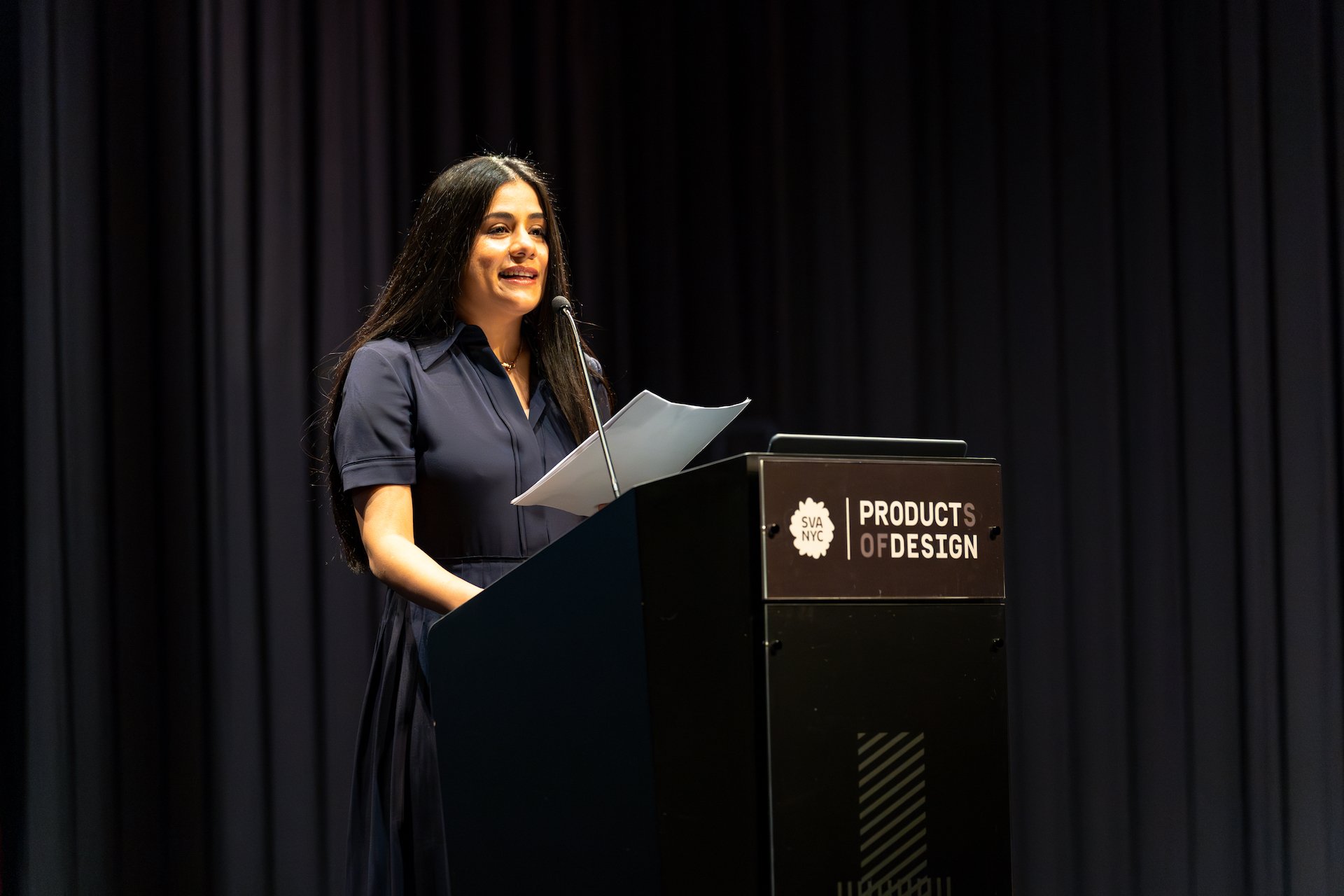
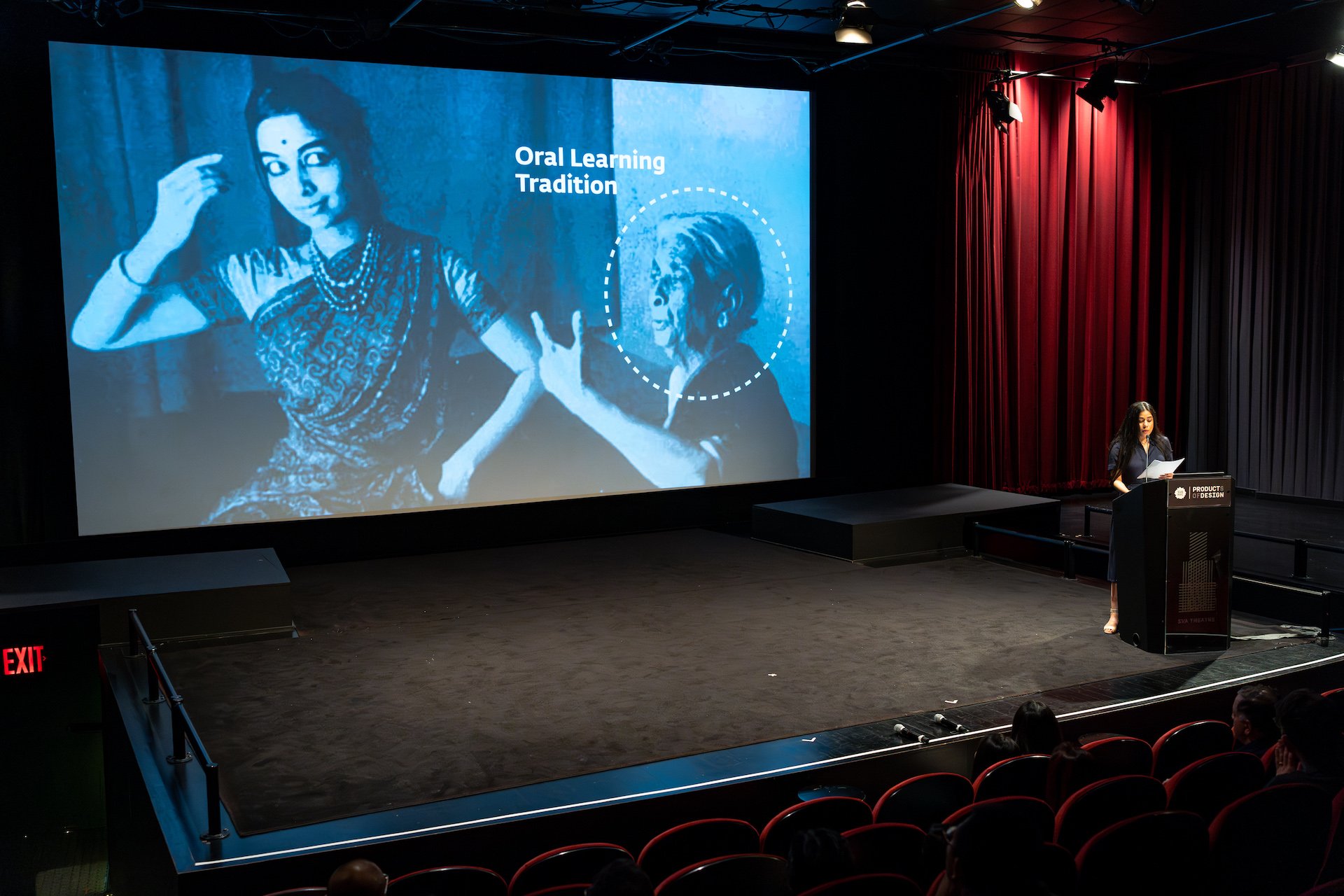
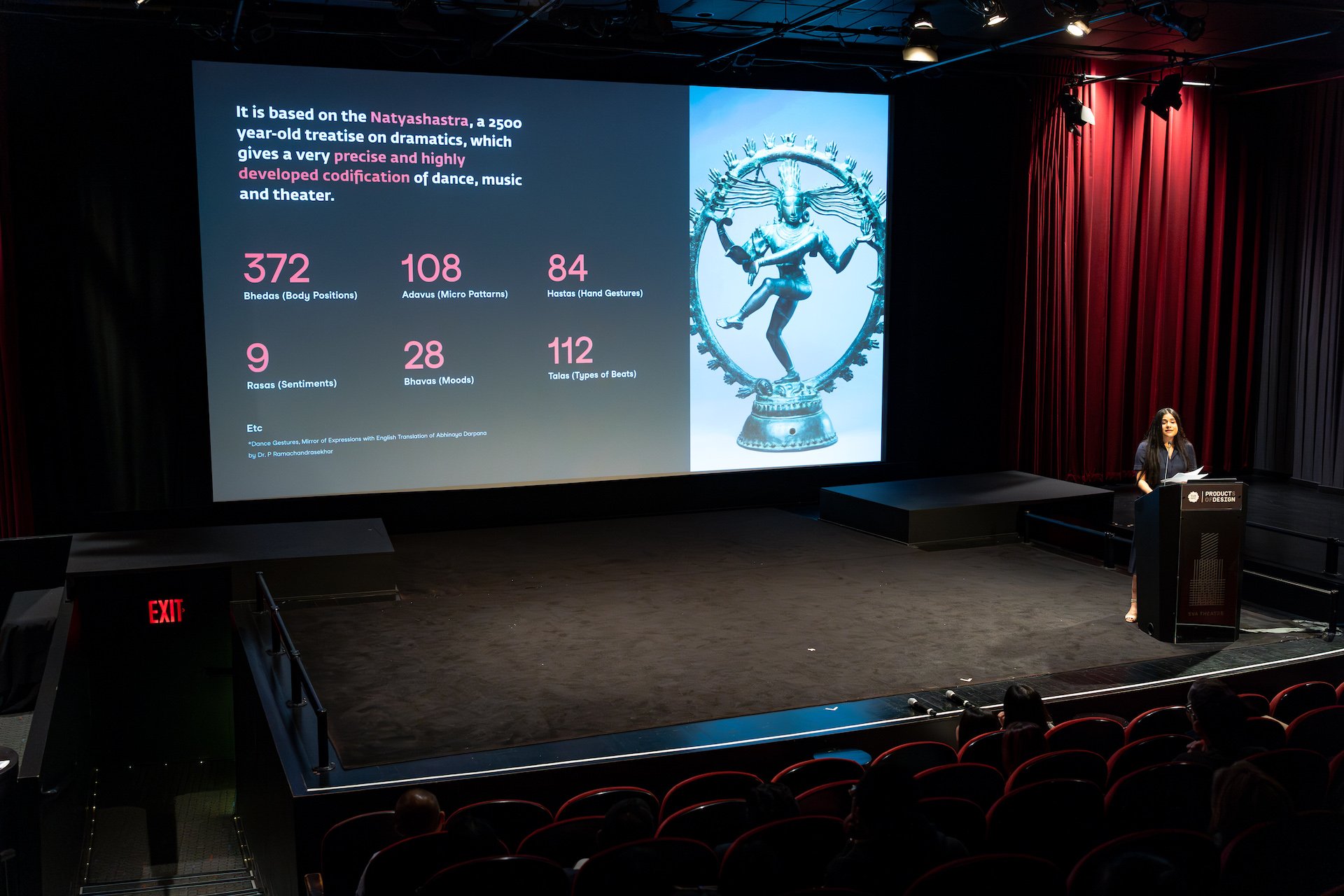
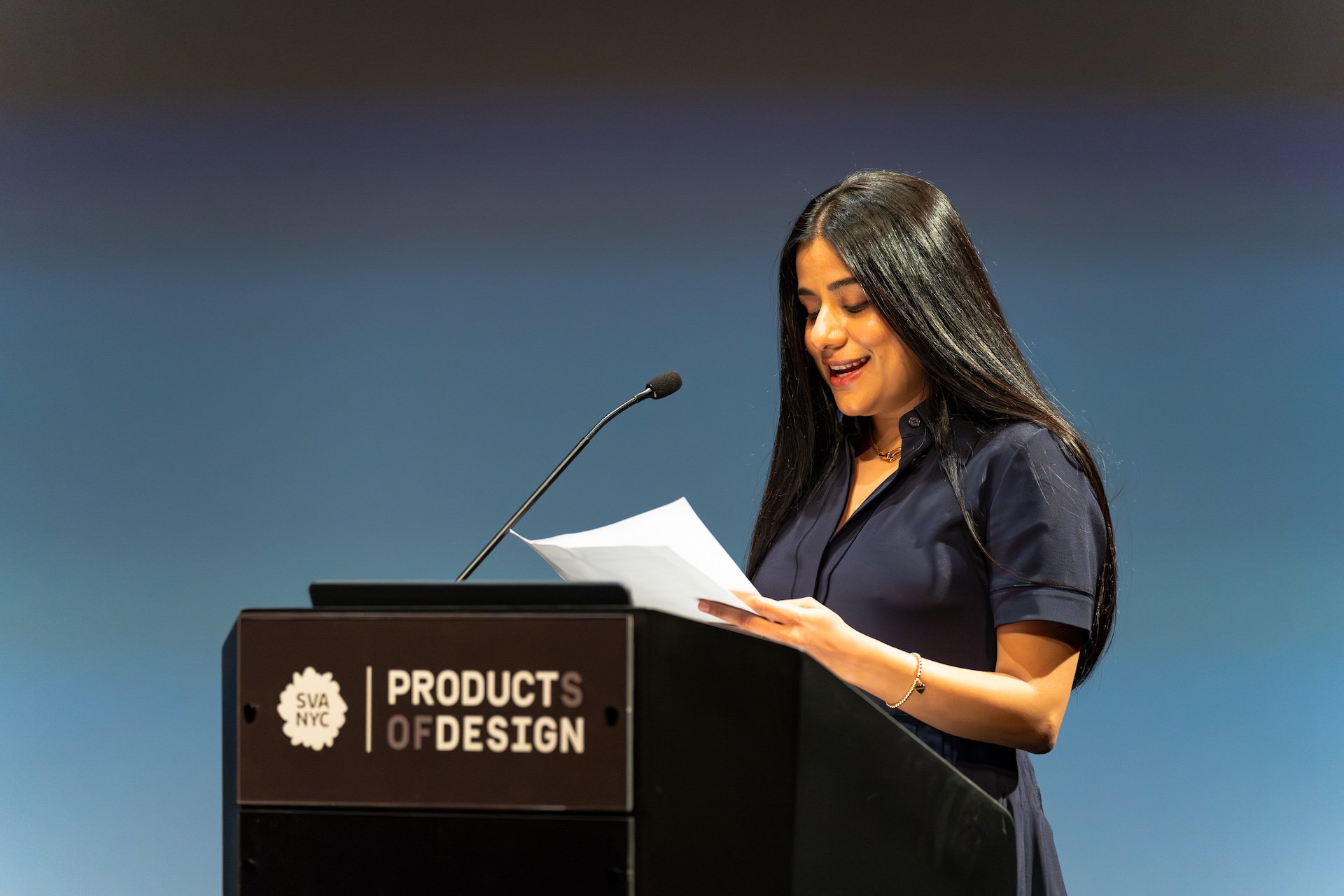
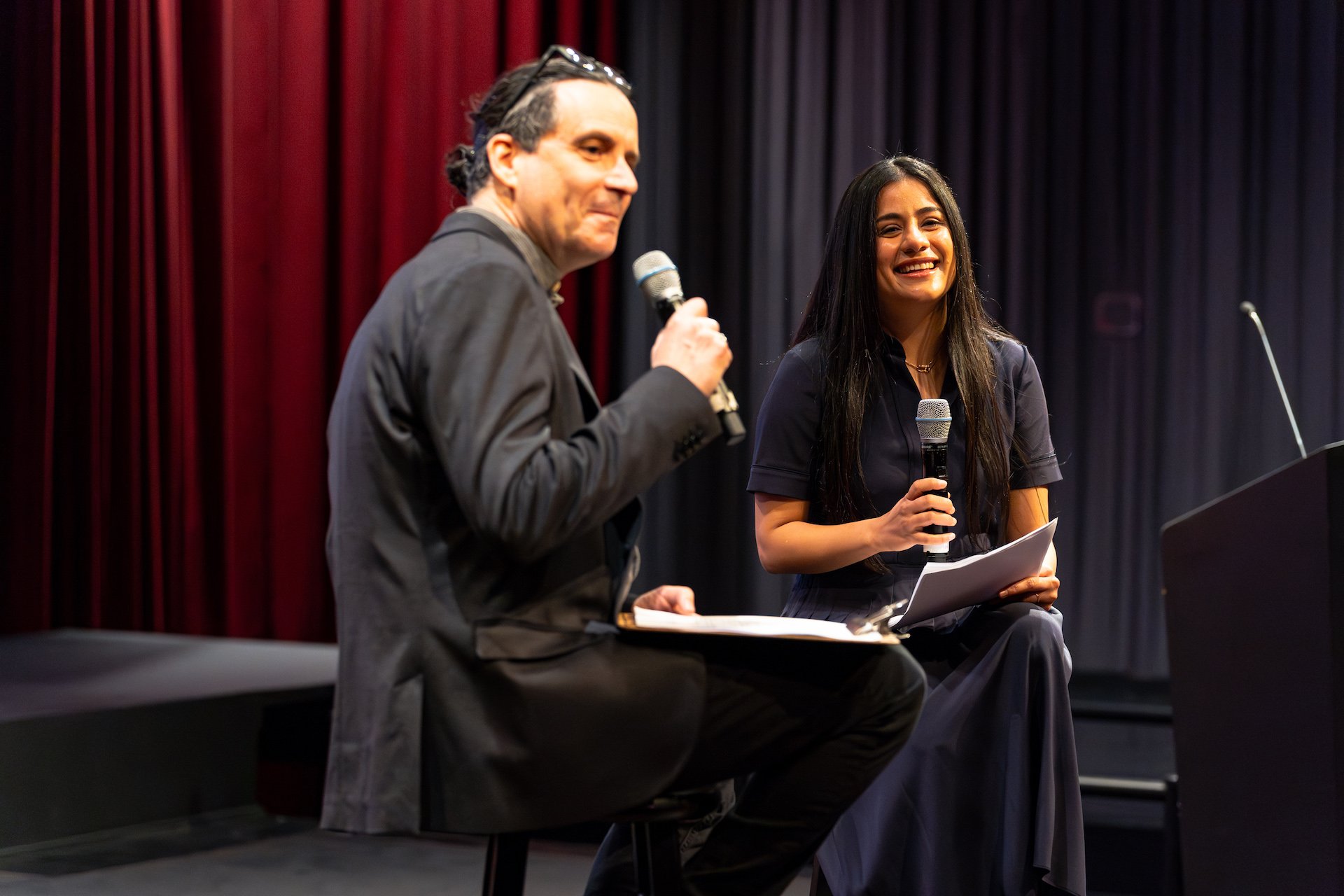
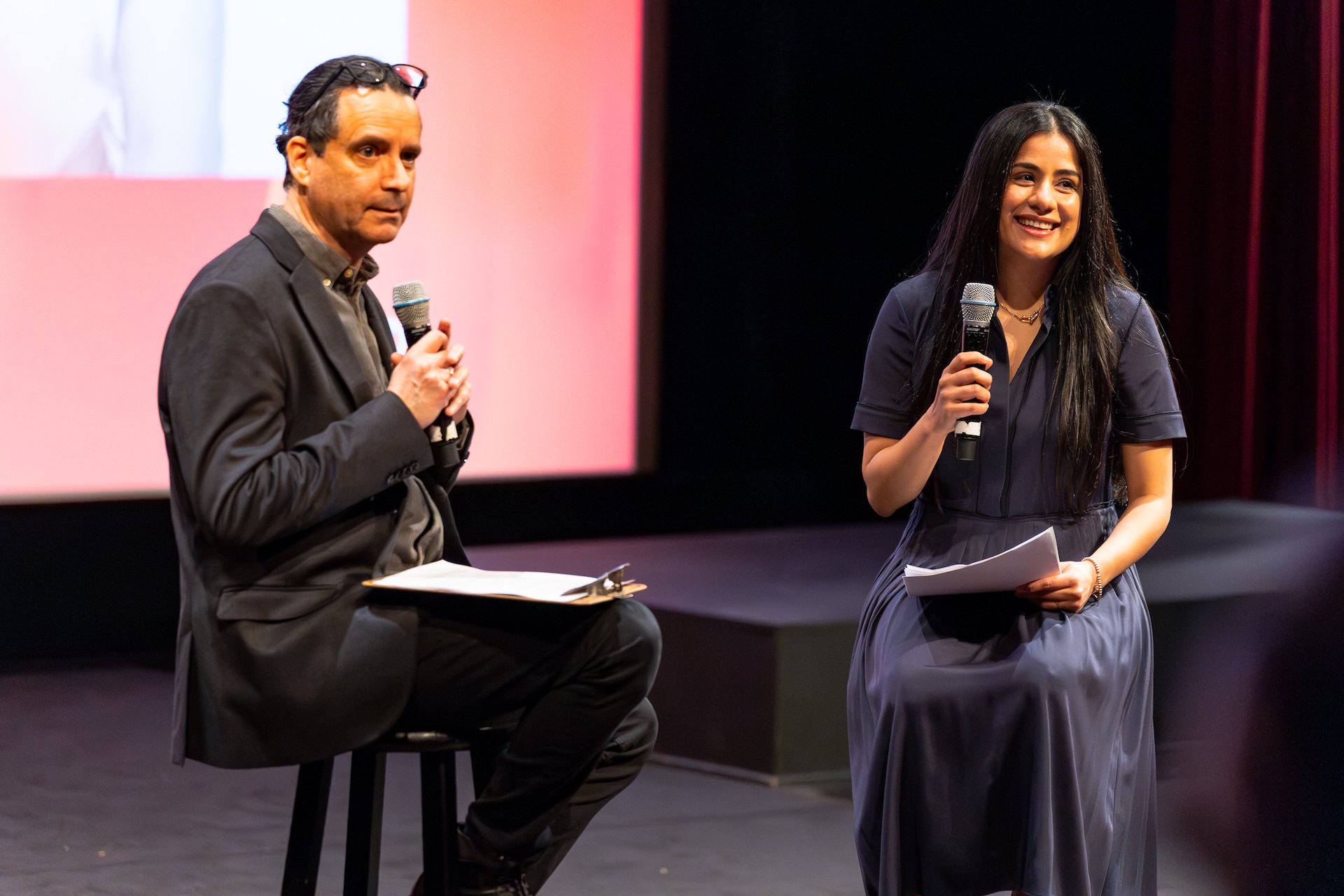
Bharatnatyam has evolved over time, adapting to various cultural and societal changes. However, in its current state, Bharatnatyam faces two significant challenges. First, a high entry barrier exists for dancers to become performers, limiting the number of people who can participate in this art form. In addition, a learning gap prevents performers from becoming choreographers and gurus, thus creating a ceiling that hinders the growth of potential contributors to the field.
With her interventions, Yukti aims to raise the ceiling, allowing more performers to progress to become choreographers and Gurus. Simultaneously, she seeks to lower the floor of entry, ensuring that despite the lifestyle and language barriers, more people continue their dance journeys and, thus, welcoming more individuals into the community of Bharatnatyam, spanning performers, choreographers, and Gurus.
Natya.AI
Natya.AI is a practice companion app for Bharatnatyam dancers that enhances practice time by providing real-time voice and visual feedback using multimodal AI. It provides actionable feedback and reduces review fatigue.
“80% of dance is practice and 80% of practice is correction.”
- Sri Thina, Bharatnatyam Performer & Teacher
From her research survey with 300+Bharatntaym dancers, Yukti learned that 97% record themselves during their practice and consistently found the following three challenges:
Practice happens asynchronously: there is no live feedback from their Guru.
Review Fatigue: for every 5 minutes of practice, dancers spend up to 10 minutes scrubbing to find their mistakes.
There is also a lot of back and forth: setting up the camera, playing music and rewinding and redoing all of this when they stop in between.
Natya.AI aims to solve all of these problems. When a dancer starts recording using the app and begin their practice, Natya uses body tracking and multimodal-AI to provide live voice and visual feedback. The AI recognizes the movement the dancer performs and generates the relevant label-nomenclature and provides a score out of 100 on posture and timing. This feedback is further captured into short snippets in the ‘Splits’ interface which was designed to make reviewing hassle free.
The app splits the entire recorded session into digestible snippets of areas that may or may not need review. ‘Green’ splits indicate the dancer performed the movements well and ‘red’ splits indicate areas that need review. During user testing Yukti learned that this reduces the review fatigue by at least 50%. The AI is trained on thousands of hours of Bharatnatyam videos and compares in real time - the practice sessions movements with the benchmark movements.
Before beginning the practice, the dancer chooses between three different modes that suit the different mental models the dancer has while practicing—such as ‘Focus mode’ where the AI is silently taking notes.
Through voice and gestures, the dancer can also have a conversation with the AI companion—helping with pauses, replays, rewinds and even advice on movement. To further make the feedback more ‘actionable’ (feedback that the dancer can work on), Natya.AI lists movements that need improvement in the summary view and also captures them in the ‘movement library’.
Taalam
Taalam, is a 'Tabla' inspired smart product for Bharatnatayam dancers to learn to count the musical beat system, called Taalam. Tabla is a percussion instrument used in Indian classical music. This fit the cultural context as well as provided visual cues for the dancers about where to “strike.” The smooth edges also provide a way for users to rest their hand while using the object.
Taalam was created to aid Bharatnatyam dancers in enhancing their understanding of music. While not all Bharatnatyam dancers integrate music into their training, it is a crucial skill, particularly for performances. Many performances involve live musicians, and dancers must collaborate closely with them. Moreover, having a grasp of music is essential for dancers who aspire to choreograph their own pieces. Thus, Taalam is a valuable tool for dancers seeking to elevate their performance and choreographic abilities through a more profound comprehension of music.
“Learning to count beats for a dancer can be tricky and challenging,” Yukti explains. “There are hundreds of different combinations in the Carnatic musical beat system that involve counting the beats by striking different fingers on the palm of their hand, while speaking syllables.” Yukti designed Taalam to help make it easier to learn for those new to the complicated beat counting system.
After the user selects the specific beats they want to learn, Taalam provides visual cues on what to speak and with which finger to strike. Taalam also plays a continuous metronome indicating when to strike. When the user taps on this ‘Tabla’ inspired interface correctly, the interface turns green, and red if they were wrong.
Alta
Alta democratizes knowledge of Bharatnatyam. Similar to the Noun project, but for dancers, it's a searchable glossary of Bharatnatyam gestures. Gestures form the basic vocabulary of how a Bharatnatayam dancer communicates a story. Alta was born from the insight that dancers learn gestures, one dance piece at a time, and often know how to use them in just one context. These gestures have Sanskrit names, a language no longer spoken, which makes it harder for dancers to decipher meaning. Furthermore, these gestures are learned one dance piece at a time, and dancers often know how to use them in just one context.
Alta allows the user to search for their gesture by typing a word in English and provides possible gestures and the contexts in which they could be used.
How does it work? In Alta, you can search any word in English or Sanskrit, such as a flower, and that gives you the ‘Padma Mudra’ a hand gesture that describes a lotus. However, Alta tells you that the same hand gesture could also be used to describe blooming, grace, love, etc. This system can be extended to other dance movements and even the literature Bharatnatyam or all Indian classical dance.
Offbeat
Yukti designed a workshop called Offbeat to challenge language barriers and gatekeeping around which contexts and stories are seen as authentic in Bharatanatyam. This event was organized in collaboration with NYC Adavu at the well-known Gibney Studios where 47 Bharatanatyam dancers came together to choreograph a 30-minute performance to AI-generated pop music.
“Despite liberal voices, Bharatnatyam remains deeply entrenched in conservative values and traditional norms,” Yukti explains. The culture surrounding Bharatnatyam is characterized by several aspects that limit its accessibility and adaptability in the contemporary sphere:
First, there’s the culture of gatekeeping. Bharatnatyam is often guarded by a select group of experts who hold significant influence over the art form’s development and acceptance. “This limits what can be shared with an audience and what poems and stories the dancer shares. There is resistance to use of contemporary music and going beyond the Hindu Epics and Puranas for storytelling.”
In addition, there’s the limitation of language barriers. The primary language used in the lyrics of Bharatanatyam music is Tamil, given its origins in Tamil Nadu. However, dancers may also perform to songs in other South Indian languages like Telugu, Kannada, and Sanskrit. “Since the origin of the dance form is incredibly old, these are often in old Tamil, or other older forms of South Indian languages or Sanskrit—languages not commonly spoken anymore,” Yukti shares. “So it is commonplace for dancers—even those who are fluent in either of these languages—to rely on translations and detailed explanations provided by their gurus (teachers). This helps them understand the story, emotions, and context of the songs they perform.”
Choreographing together on something new and contemporary encouraged dancers to get to know each other and build a sense of community. “They lost their inhibitions and fully embraced the process of creating together,” Yuki reflects on the event. “This open, lighthearted atmosphere allowed dancers to enjoy the experience while challenging conventional norms and even inventing new gestures and movements.”
Many shared their experiences and thoughts on gatekeeping, language barriers and how relatable, relevant and inaccessible Bharatnatyam is or isn't to the current generation. Yukti imagines a future iteration of this project in the future: third spaces called “Offbeat Studios” for incubating collaboration with dancers of different backgrounds to remix cultures and genres, powered by AI generated live music.
To learn more about Yukti Arora's work, take a look at her projects in more detail at yuktiarora.com.





















